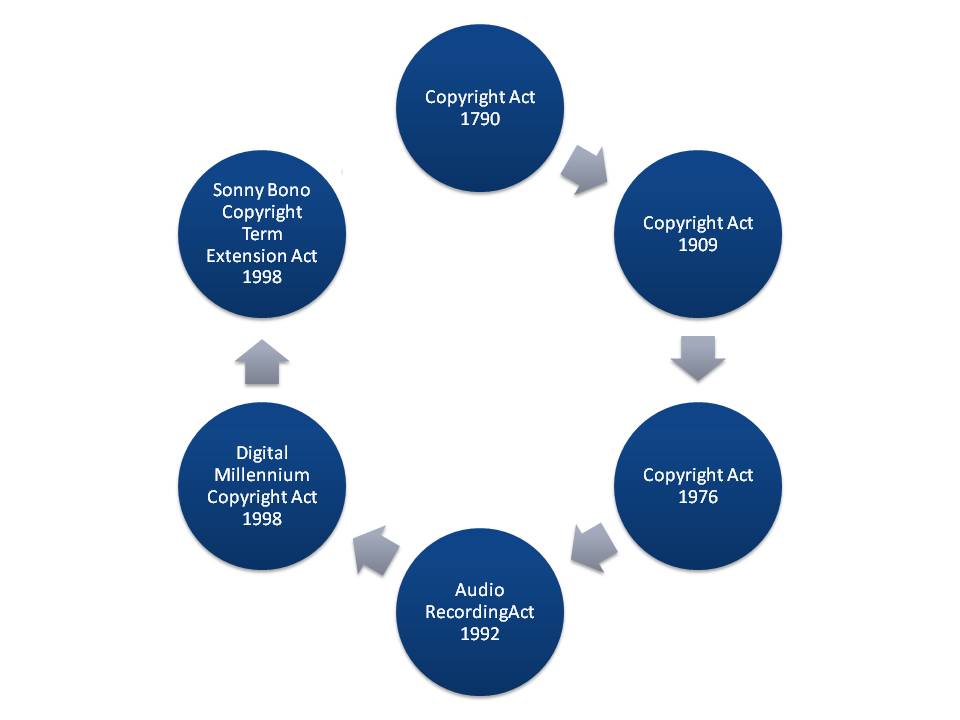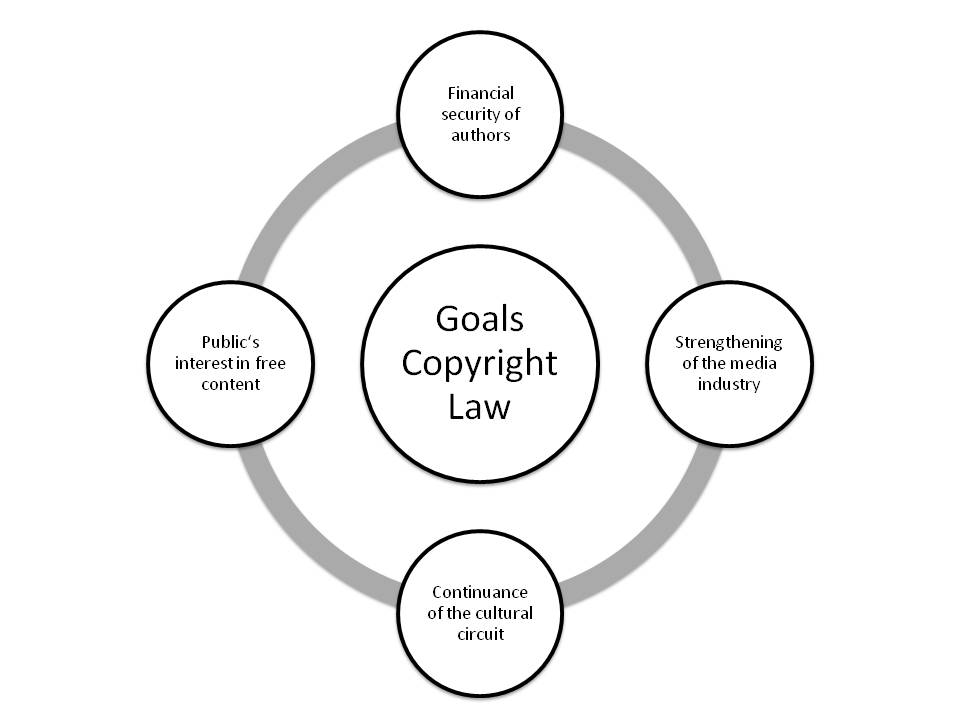Internationaler Gewerblicher Rechtsschutz und Urheberrecht II
Teil 1 - Introduction
| The US Copyright Law is nearly as old as the USA itself. The requirement for author’s protection was established in the Constitution from 1787 (Copyright Clause): The Congress shall have Power [. . .] To promote the Progress of Science and useful Arts, by securing for limited Times to Authors and Inventors the exclusive Right to their respective Writings and Discoveries.” (Art. I, Sec. 8, Clause 8 US Constitution) Immigrants from England brought the ideas of the Statute of Anne (1710) with them: the author shall be owner of the exclusive right to copyright for a limited time (14 years), not the stationers (Verleger) as before. But the Statute of Anne regulated only singular copyright issues and only in respect of literary works; the most copyright questions remained for court’s decisions. Therefore the copyright in England had a strong common law influence although there had been early regulation. In 1790, the USA also implemented a copyright law that was extremely similar to the spirit of the Statute of Anne in promoting education and learning. The written US copyright law also restraint its application to literary works. Thus, the common law impactremained strong until the Copyright Act from 1976 (17 U.S.C.) which brought the US Copyright Law to a nearly modern level. Copyright Law Revision – Senate Report No. 94-473 (1975), p. 48: “The present Copyright Law of the United States is essentially that enacted by the Congress in 1909. Many significant developments in technology and communications have rendered that law clearly inadequate to the needs of the country today.” |
But, the Copyright Act 1976 held up specific principles:
Especially the requirement of a registration and the abandonment of moral rights kept the US outside from the international copyright system established by the Berne Convention(RBÜ, see above). In 1989, the US Copyright law dropped the registration requirement and accepted the necessity of moral rights. The modern written Copyright Acts – Audio Recording Act, Digital Millennium Copyright Act (DMCA) and Sony Bono Copyright Term Extension Act – tried to give the US Copyright law a contemporary face with their regard to new copy techniques. But, with their “Cheques and Balances”-system they make the understanding of the Copyright Act quite difficult.
|

| In fact, one has to distinguish the common law impact on copyright meaning that the law is mainly influenced by precedent cases (case law) from the denied common law copyrightmeaning the idea that copyright is the natural right of the creator. |
WHEATON v. PETERS, 33 U.S. 591 (1834)
(…) Although united in this clause, and for the same purpose of being secured by congress, the subjects of patents and of copyrights have little analogy. They are so widely different, that the one is property, the other a legalized monopoly. The one may be held and enjoyed without injury to others; the other cannot, without great prejudice. The one is a natural right, the other in some measure against natural right. (…) The question of a common law right has not been decided favourably to the author; and if it had been, the existence of a statute is thus recognized as superseding both the right and the remedy which may have previously existed. (…) If in England, the source and fountain of the common law, no such right exists, what can be alleged in favour of its existence in these United States? We contend that there could be no such common law right here, even if there were no statute: and that if there could be, it is incompatible with the provisions of the statute. (…) |
| The general idea of the US Copyright Law can be seen in the tradition of the entire Copyrightsystem: the focus is not on the person of the author as in the droit d‘auteursystem but on the work as a product. The economical protection of the author is only one of four equally important goals of the US Copyright Law. The Copyright shall also enable a strong media industry and the cultural circuit. The public’s need of free access to content for educational or scientific purposes used to be seen at least as important as the author’s protection. |

| In the last 40 years, the public’s interests have been supported by neither the executive nor the legislative. Especially the DMCA and the Sonny Bono Act were in favor of the authors and the media industry. But there is an ongoing discussion about the nature of copyright and how the public’s interests could be implemented in the existing Copyright Law more explicit. |

Lawrence Lessig, Free Culture (2004), p. 19
“Instead, in our tradition, intellectual property is an instrument. It sets the groundwork for a richly creative society but remains subservient to the value of creativity. The current debate has this turned around. We have become so concerned with protecting the instrument that we are losing sight of the value. The source of this confusion is a distinction that the law no longer takes care to draw - the distinction between republishing someone's work on the one hand and building upon or transforming that work on the other. Copyright law at its birth had only publishing as its concern; copyright law today regulates both.” |
CategoryInternatUrheberrecht
Diese Seite wurde noch nicht kommentiert.

